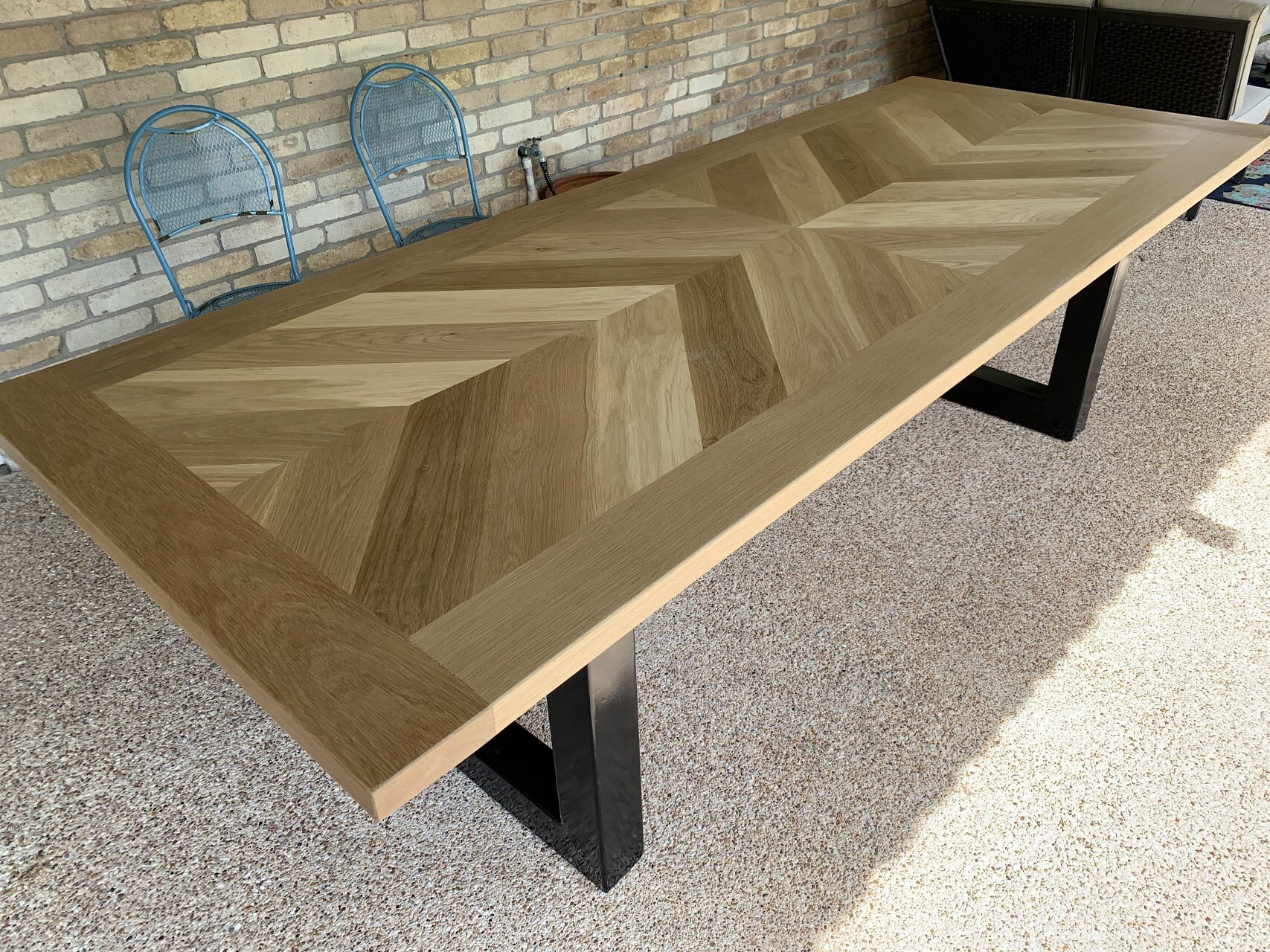Lumber Options for Your Custom Furniture.
What type of wood should my custom furniture be made from?
When you begin the process of having a custom designed piece of furniture built by Dailey Woodworks you have five choices of materials. We intentionally limit our material selections to woods grown and harvested in Texas and specifically to the Brazos Valley.
Your choices are Mesquite, Black Walnut, Pecan, Post Oak, and Southern Yellow Pine. Each of these types of wood have their own unique characteristics (pros and cons) and are subject to availability.
To help give you an idea of how these woods vary in cost, we’re sharing the price of a 42" wide by 72” long (3.5ft x 6ft) dining table with our classic painted base.
A Note about Lumber Prices
Over the last year, lumber availability and pricing have shifted wildly. While we try to keep our pricing accurate and up to date, it is impossible to know the exact price of the lumber you may want to use for your project until we get a quote from our suppliers
This is especially true of live edge slabs as they are priced differently than dimensional lumber
We offer 3D modeling as part of our design process
Mesquite
Unique South Texas Hardwood (Limited Availability)
The Price for a 72” x 42” Table would be $4649 (Price subject to change)
Mesquite is a very unique wood that has a striking orangish-tan color and every piece is its own with unique bug holes, checks, and knots. We fill these with clear epoxy to highlight these beautiful characteristics. No two mesquite furniture pieces ever look identical, so your piece of art will look like no one else’s.
Pros of using Mesquite
You’ll have a beautiful and rare piece of art that few people get to enjoy
There’s literally nothing else that looks like mesquite with it’s unique coloring and character.
It’s very hard and very durable. Making it great for furniture that will be loved and used.
It’s best used in live-edge furniture where the natural imperfections in the wood can be celebrated.
Cons of using Mesquite
Price: Mesquite lumber is the most expensive of our options.
Limited Availability: The Mesquite tree is odd. Most of the time it the mesquite tree exists as scrub brush, but in places like south Texas it can grow into sizable trees. What this means is that it’s sometimes hard to find big enough trees in the volume needed for furniture suites.
It’s going to look Rustic/Natural with voids, knots, and checks. Some people love this, some people don’t. If you don’t like this style then we recommend walnut or oak.
Black Walnut -
Classic Warm Chocolate Brown with Striking Grain Patterns
The Price for a 72” x 42” Table would be $4459
Black walnut is a classic beauty that still carries striking color and grain patterns. The grain almost swirls in places then goes to a calm and under-stated chocolatey brown. The color of walnut varies from tree to tree from dark brown to a reddish brown.
Pros of using walnut:
Works with many styles from traditional, to rustic, to modern
Dense wood that resists scratches
Great structural strength - Walnut has been a favorite of furniture makers for centuries.
Deep dark coloring that cant be replicated with stains on other woods
Cons of Using Walnut:
Price: Walnut is one of the most expensive domestic hardwoods
Color Variation: You may love this or hate this. The color of walnut can vary dramatically even across a single board.
Pecan -
Dramatic color variation, Stunning Texas Beauty, and One of my personal favorites
The Price for a 72” x 42” Table would be $4195
I absolutely love working with Pecan. It’s amazingly beautiful, with colors that range from gold, to brown, to pink. Like Mesquite there’s nothing else like this wood. Each tree is it’s own unique work of art. We simply bring it out.
Pros of Using Pecan:
Readily available in our region
Lower cost than Mesquite or Walnut
Excellent strength and hardness - making it ideal for furniture that’s going to see a lot of “love”
Makes a statement
Cons of Using Pecan:
Does not stain well - This means that the colors are its colors.
Will always have a more “rustic” feel to it. We love that but maybe you don’t
Natural checks and void that will require epoxy filling
White Oak
It’s Oak. It’s hard. It’s durable. It’s timeless.
The Price for a 72” x 42” Table would be $3499 (The Table Pictured $4199)
White Oak is readily available, cost-effective, great for all types of furniture, and suitable for any style of furniture.
Oak is very durable, it’s used for traditional hardwood floors, and was a favorite for Craftsman and Mission style furniture.
It stains very well allowing it to fit a variety of styles and home decor. White Oak is also suitable for exterior use.
Click Here to learn more about this unique Whiskey Barrel Table
Pros of Using Oak
Great value
Excellent Strength and Durability
Can fit a variety of styles
Stains Well
Cons of Using Oak:
Oak has a slight texture to it that you can feel under finish.
Umm… It’s oak there’s not much to say. It’s a great material for building furniture.
Beech Hardwood
Beech has become our go-to material for our custom dog kennels. It stains well and paints well, and is a great value.
Southern Yellow Pine
Versatile and practical
The Price for a 72” x 42” Table would be $1769
Southern Yellow Pine is a staple of farmhouse style furniture. Distinct look with characteristic knots make pine a fantastic choice for those who like Rustic or Farmhouse Decor.
Southern Yellow Pine IS NOT spruce or white pine. Most of the negative things you hear about pine furniture comes from the white pines or “white wood” found at big box stores. Southern Yellow Pine is much more durable, much harder, and a much better wood for quality furniture.
Pros of Using Southern Yellow Pine
Very cost effective. You’ll notice for our example table the price of a pine table is half of the Oak table.
Paints well - great for painted furniture and cabinetry
Stains very well
Charming Rustic/Farmhouse look that’s very popular
Cons of Using Southern Yellow Pine
As a softwood pine will dent a scratch easier than Oak, Pecan, Walnut, or Mesquite.
Rustic/Farmhouse look that may become dated as trends change
Having your dream furniture built is definitely a big investment. We hope this article helped in your decision making process. If you have any specific questions feel free to contact us. We’re happy to answer them for you.
Are you ready to get started on your custom furniture?
Wait! What about _________ type of wood?!
Obviously, there are about 9,001 other types of wood in the world that available for, and suitable for custom furniture. Maple, Poplar, Cedar, Alder, etc.
The short answer is….. These are the types of wood I like working with and that I want to use.
A wise mentor of mine once said, “There’s only so many projects I can build in my lifetime. I want those projects to be something not only my customers love but that I love as well. This is my art.”










